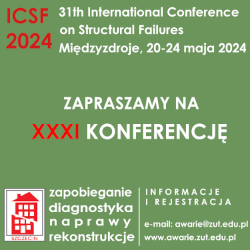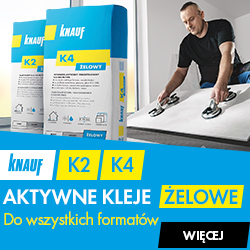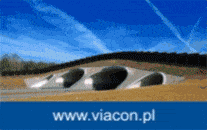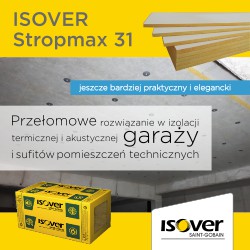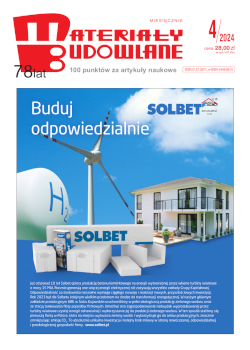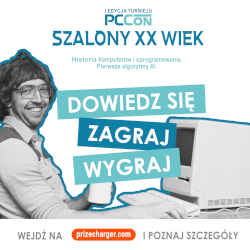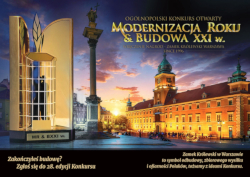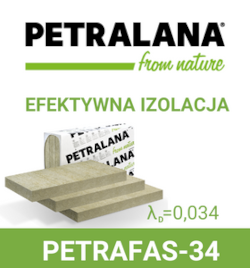prof. dr hab. inż. Jerzy Hoła, Politechnika Wrocławska, Wydział Budownictwa Lądowego i Wodnego
dr inż. Krzysztof Schabowicz, Politechnika Wrocławska, Wydział Budownictwa Lądowego i Wodnego
Autor do korespondencji: Ten adres pocztowy jest chroniony przed spamowaniem. Aby go zobaczyć, konieczne jest włączenie w przeglądarce obsługi JavaScript.
DOI: 10.15199/33.2015.05.01
Artykuł odnosi się do zagadnień dotyczących diagnostyki obiektów budowlanych wykonywanej nie tylko w trakcie ich użytkowania, ale również podczas wznoszenia. Dokonano podziału oraz syntetycznego przeglądu i opisu wybranych metod. Dużą uwagę zwrócono przede wszystkim na przydatne do tego celu najnowsze metody nieniszczące i seminieniszczące. Podkreślono, że aktualnie rozwój metod badawczych jest ukierunkowany na ocenę w elementach i konstrukcjach innych cech niż wytrzymałość. Zauważono, że rozwój ten postępuje wyraźnie w kierunku konstruowania aparatury pozwalającej otrzymywać precyzyjne obrazy „wnętrza” badanego elementu. Umożliwia to m.in. pełniejszą ocenę jakości wykonania poszczególnych elementów obiektu i jego konstrukcji, także przy wykorzystaniu systemów bezprzewodowych.
Słowa kluczowe: obiekty budowlane, diagnostyka, metody badawcze, metody nieniszczące, metody seminieniszczące.
* * *
Diagnostics of civil structures
This paper presents a review of test methods for diagnosing civil structures. Diagrams and tables showing the classification of the methods are included. The most interesting of the methods are described. A special focus is on the latest nondestructive and seminondestructive methods.Attention is also drawn to the fact that today the development of test methods is oriented towards the evaluation of the characteristics of structures and structural components other than strength. The following trends are apparent: the development of equipment enabling one to obtain an accurate image of the inside of the tested element, the use of wireless systems and the automation of measurements. An extensive survey of the literature on the subject, which researchers and experts in the diagnostics of civil structures may find useful, is included.
Keywords: civil structures, diagnostics, test methods, nondestructive methods, seminondestructive methods.
Literatura:
[1] Bień J., Uszkodzenia i diagnostyka obiektów mostowych.Wydawnictwo Komunikacji i Łączności, Warszawa 2010.
[2] Conyers, Lawrence B., andGoodman D.,Ground- penetrating radar. AltaMira Press, 1997. [3] Czarnecki L., Emmons P., Naprawa i ochrona konstrukcji betonowych. Polski Cement, Kraków, 2002.
[4] Davis A. G., The non-destructive impulse response test in North America: 1985-2001, Vol. 36, NDT&E International. 2003.
[5] Garbacz, A., Courard, L., Bissonnette, B., A surface engineering approach applicable to concrete repair engineering. Bulletin of The Polish Academy of Sciences: Technical Sciences, Vol. 61, No. 1, 2013.
[6] Gorzelańczyk T., Hoła J., Sadowski Ł., Schabowicz K., Methodology of nondestructive identification of defective concrete zones in unilaterally accessible massive members. Journal of Civil Engineering and Management, 19 (6) (2013) 775-786.
[9] Schabowicz K., Suvorov V., Nondestructive testing and constructing profiles of back walls by means of ultrasonic tomography. Russian Journal of Nondestructive Testing, 50 (2) (2014).
[10] Schabowicz K., Ultrasonic tomography – the latest nondestructive technique for testing concrete members – description, test methodology, application example. Archives of Civil and Mechanical Engineering, 14 (2) (2014) 295-303.
[11] Drobiec Ł., Jasiński R., PiekarczykA., Diagnostyka konstrukcji żelbetowych. Metodologia, badania polowe, badania laboratoryjne betonu i stali, t. 1. Wydawnictwo Naukowe PWN,Warszawa 2010.
[12] Hoła J., Bień J., Sadowski Ł., Schabowicz K., Non-destructive and minor-destructive diagnostics of concrete structures in assessment of their durability. Bulletin of the Polish Academy of Sciences, Technical Sciences, (1) 2014.
[13] Sansalone M., Streett W.: Impact-echo: Nondestructive Evaluation of Concrete and Masonry. Bullbrier Press, Ithaca, 1997.
[14] Hoła J., Sikora J., Filipowicz S.,Matkowski Z., Nita K., Schabowicz K., Wójtowicz S., Biernat K., Newtomographicmethod of brickwork damp identification: collective work. Wrocław: Oficyna Wydawnicza PolitechnikiWrocławskiej, 2010. 106 s.
[15] Hoła J., Schabowicz K., Nondestructive elastic- wave tests of foundation slab in office building. Materials Transactions. 2012, Vol. 53, nr 2.
[16] Hoła J., Schabowicz K., State-of-the-art non- -destructivemethods for diagnostic testing of building structures – anticipated development trends.Archives of Civil and Mechanical Engineering, X (3) (2010) 5-18.
[17] Hoła J., Sadowski Ł., Schabowicz K., Nondestructive identification of delaminations in concrete floor toppings with acoustic methods. Automation in Construction, 20 (7), 2011, 799-807.
[18] Santos, P., Julio, E., A state-of-the-art review on roughness quantification methods for concrete surfaces. Construction and Building Materials, 38 (2013), pp. 912-923.
[19] Schabowicz K., Methodology for non-destructive identification of thickness of unilaterally accessible concrete elements bymeans of state- of-the-art acoustic techniques. Journal of Civil Engineering and Management, 19 (3) (2013) 325-334.
[20] Schabowicz K.,Modern acoustic techniques for testing concrete structures accessible from one side only. Archives of Civil and Mechanical Engineering, DOI: 10.1016/j.acme.2014.10.001. [21] Malhotra, V.M., & Carino, N.J. (Eds.),. Handbook on nondestructive testing of concrete. CRC Press, 2004.
[22] Nowak H., Zastosowanie badań termowizyjnych w budownictwie. Oficyna Wydawnicza Politechniki Wrocławskiej, Wrocław, 2012.
[23] Pala A., Badania wilgotności zasolonej cegły ceramicznej nieniszczącą metodą dielektryczną. Materiały Budowlane 10, 2014.
[24] PalaA., Hoła J., Badania wilgotności zasolonej cegły ceramicznej nieniszczącą metodą opornościową. Materiały Budowlane 7, 2013.
[25] Lu S., Landis E. N., Keane D. T., X-ray microtomographic studies of pore structure and permeability in Portland cement concrete. Materials and Structures, 2006, Vol. 39, pp. 611-620.
[26] El-Reedy, Mohamed., Advanced materials and techniques for reinforced concrete structures. CRC Press, 2010.
[27] Verbeck, G. J., Field and laboratory studies of the sulphate resistance of concrete. Portland Cement Association. Research and Development Laboratories 1967.
[28] Malhotra, V. M., Preliminary Evaluation of Windsor Probe Equipment for Estimating theCompressive Strength ofConcrete.Mines Branch Investigation Rep. IR 71-1, Department of Energy, Mines and Resources, Ottawa, December 1970.
[29] Nasser, K. W. and Al-Manaseer, A., New non-destructive test for removal of concrete forms. Concr. Int. ACI, 9 (1), 41, 1987.
[30] De Marco, R., Clarke, G., and Pejcic, B., Ion-Selective Electrode Potentiometry in Environmental Analysis. Electroanalysis, 19 (19-20) 2007, 1987-2001.
[31] Angst, U. M., & Elsener, B., On the Applicability of the Wenner Method for Resistivity Measurements of Concrete. ACI Materials Journal, 111, 2014 (1-6).
[32] Monteiro J. M., Morrison F., Frangos W., Nondestructive measurement of corrosion state reinforcing steel in concrete. ACI Materials Journal/ November-December 1998.
[33] Gowers K. R., Millard S. G., Measurement of concrete resistivity for assessment corrosion severity of steel using Wenner technique. ACI Materials Journal/September – October 1999.
[34] Millard S. G., Harrison J. A., Edwards A. J., Measurement of the electrical resistivity of reinforced concrete structures for the assessment of corrosion risk. ACI Materials Journal 1989. [35] Grubb, J. A.; Limaye, H. S.; and Kakade, A. M., Testing pH of Concrete. Concrete International, V. 29, No. 4, Apr. 2007, pp. 78-83.
[36] Książek, M., Biological corrosion of the sandstone of the quay of the river of Odra inWrocław. Engineering Failure Analysis, 44, 2014, 338-344.
Materiały Budowlane 5/2015, s. 3 - 7 (spis treści >>)










